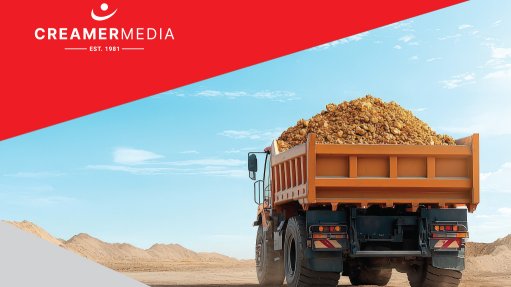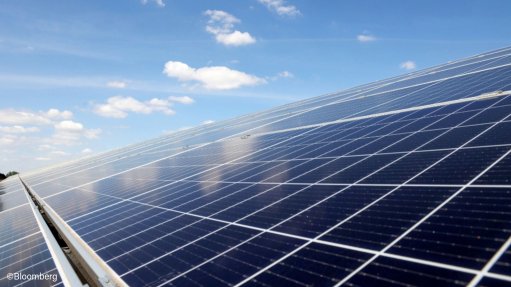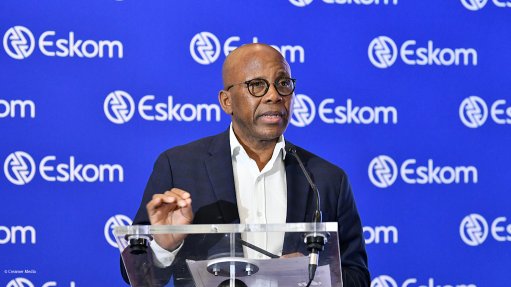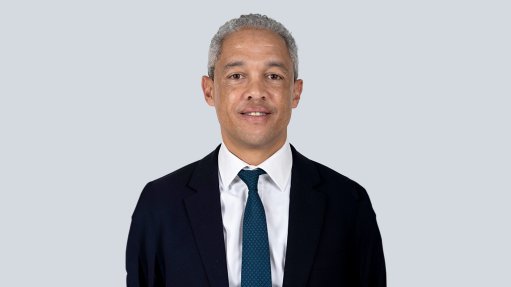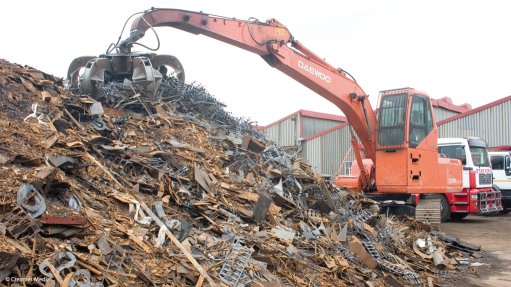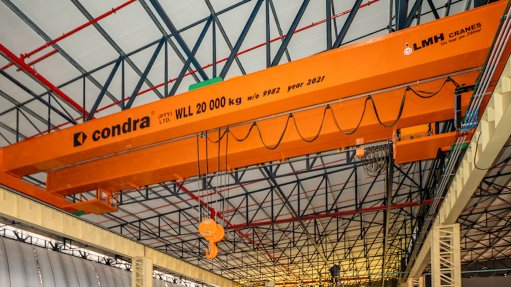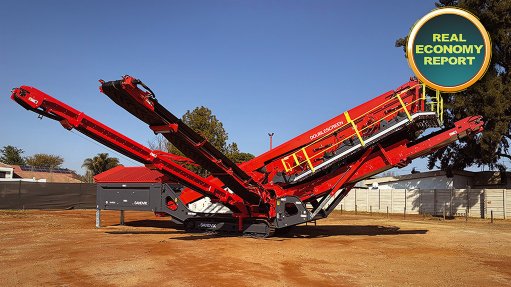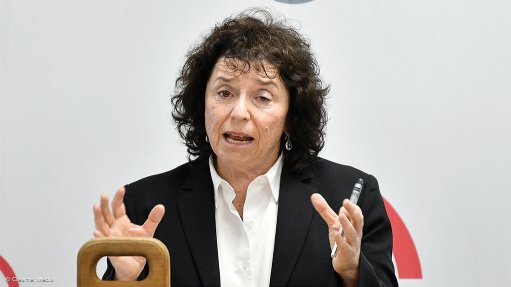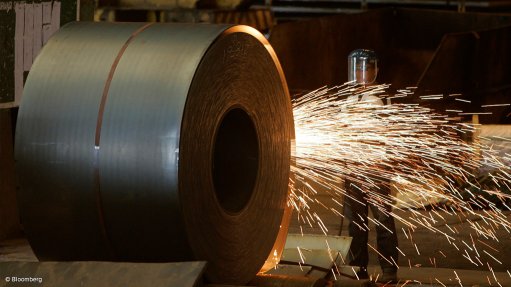Mining still major contributor to South African economy

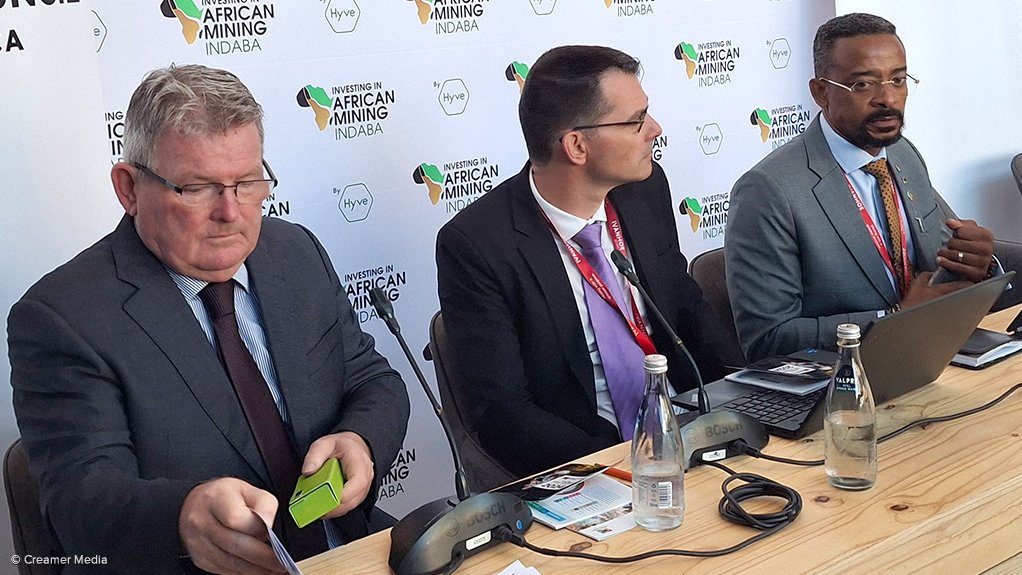
Paul Dunne, Hugo Pienaar and Mzila Mthenjane
Photo by Creamer Media's Rebecca Campbell
The South African mining industry contributed 6% of the country’s total nominal GDP during the first three quarters of last year. In money terms, this amounted to R432.7-billion. So highlighted Minerals Council South Africa chief economist Hugo Pienaar in a media briefing on Monday, at the Investing in African Mining Indaba 2025 conference, being held at the Cape Town International Convention Centre.
Further, minerals accounted for 45% of the country’s exports (worth about R800-billion) for the whole year, last year. The mining industry paid 14% of all corporate taxes in South Africa (totalling R42.6-billion) during the financial year 2023/24. During the third quarter of last year the sector employed 471 882 people, or 4.5% of the country’s total work force. The earnings of these employees totalled R189.2-billion, or 5.7% of the country’s total workforce earnings.
Pienaar’s presentation was entitled “The State of the Mining Nation”. He noted that the country was suffering from long-term deindustrialisation. In 1993, manufacturing had accounted for 21.4% of South African nominal GDP, but in 2023 (the most recent year for which full-year data was available) it contributed 12.8%. Over the same period, construction’s contribution had declined from 3.1% to 2.2.%.
In contrast, mining’s contribution to national nominal GDP had risen slightly from 5.1% in 1993 to 6% in 2023. But, he pointed out, mining had been “bailed out” by high commodity prices over this period. A graph in real GDP trends would also show a declining trend for mining, over this period.
Moreover, throughout 2024, baselined on December 2023, coal and platinum group metal (PGM) prices had shown a relatively stagnant trend, while iron-ore prices had dropped 25%, owing to anxieties about the Chinese economy. Only gold had soared, by 35%. The PGM sector had shed 14 248 jobs during the first nine months of last year, but job creation in the chrome and manganese sectors had reduced the net job loss figure for the whole industry to 11 860.
A big issue for the industry was energy costs. Pienaar highlighted the high level of tariff increases that national electricity utility Eskom had sought from its regulator, Nersa. Over the period 2012 to 2025 Eskom had sought average tariff increases of 19.62%, although the average national headline consumer price index inflation figure had been 5.2%. The average tariff increases granted by Nersa over this period had been 10.92%. While the mining industry was glad that Nersa had rejected Eskom’s tariff applications, the tariff increases the regulator had granted were still more than double the inflation rate and still eroded the competitiveness of South African mining.
Another “key constraint” on the mining sector was the state of the country’s railway network (owned and operated by State-owned monopoly Transnet). But, with help from the private sector, the railways had begun an improving trend. In 2023, rail had transported 47.9-million tons of coal to the Richards Bay Coal Terminal, and for this year the figure was expected to be 51.9-million tons. The figure for total freight carried by rail was expected to increase from 151.7-million tons in 2023 to 165-million tons in 2024. The target for total freight for this year was 193-million tons, and for 2029, 250-million tons. Nevertheless, there was still “a long way to go”.
The final (railway) Network Statement provided improved incentives for the private sector to participate in rail transport, he pointed out. But, currently, Transnet did not have the money to repair and maintain its network.
On the brighter side, the new mining cadastre, expected to become operational during the second half of this year, would make South Africa a much more attractive location for mining exploration. Indeed, it could be a “game changer” for the sector, as mining cadastre systems had been extremely successful elsewhere in Africa.
Also of importance this year would be the release, under the Mineral and Petroleum Resources Development Act, of the country’s review and list of critical minerals. Although the term “critical minerals” was usually thought to refer to those minerals essential for the green energy transition, Pienaar pointed out that, in the South African context, coal was a critical mineral.
If mining still made such an important contribution to the South African economy, how much greater would its contribution be, if it was not under pressure?, he queried.
Comments
Press Office
Announcements
What's On
Subscribe to improve your user experience...
Option 1 (equivalent of R125 a month):
Receive a weekly copy of Creamer Media's Engineering News & Mining Weekly magazine
(print copy for those in South Africa and e-magazine for those outside of South Africa)
Receive daily email newsletters
Access to full search results
Access archive of magazine back copies
Access to Projects in Progress
Access to ONE Research Report of your choice in PDF format
Option 2 (equivalent of R375 a month):
All benefits from Option 1
PLUS
Access to Creamer Media's Research Channel Africa for ALL Research Reports, in PDF format, on various industrial and mining sectors
including Electricity; Water; Energy Transition; Hydrogen; Roads, Rail and Ports; Coal; Gold; Platinum; Battery Metals; etc.
Already a subscriber?
Forgotten your password?
Receive weekly copy of Creamer Media's Engineering News & Mining Weekly magazine (print copy for those in South Africa and e-magazine for those outside of South Africa)
➕
Recieve daily email newsletters
➕
Access to full search results
➕
Access archive of magazine back copies
➕
Access to Projects in Progress
➕
Access to ONE Research Report of your choice in PDF format
RESEARCH CHANNEL AFRICA
R4500 (equivalent of R375 a month)
SUBSCRIBEAll benefits from Option 1
➕
Access to Creamer Media's Research Channel Africa for ALL Research Reports on various industrial and mining sectors, in PDF format, including on:
Electricity
➕
Water
➕
Energy Transition
➕
Hydrogen
➕
Roads, Rail and Ports
➕
Coal
➕
Gold
➕
Platinum
➕
Battery Metals
➕
etc.
Receive all benefits from Option 1 or Option 2 delivered to numerous people at your company
➕
Multiple User names and Passwords for simultaneous log-ins
➕
Intranet integration access to all in your organisation






